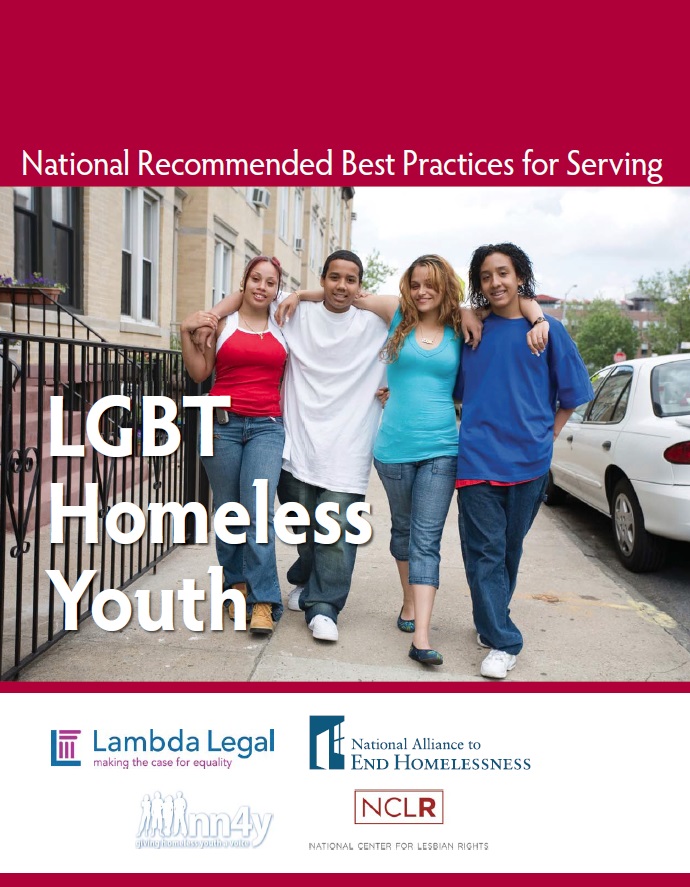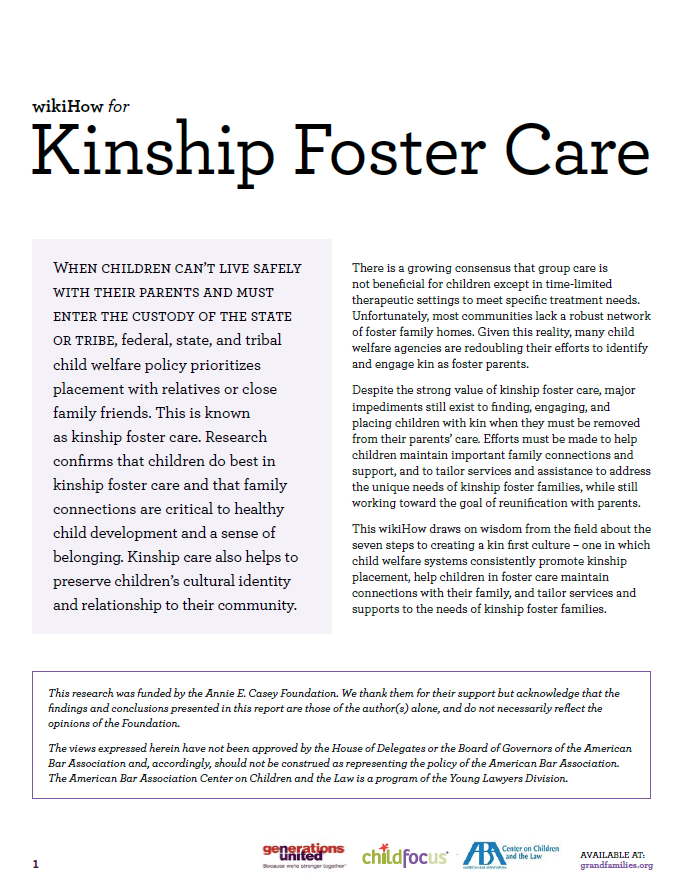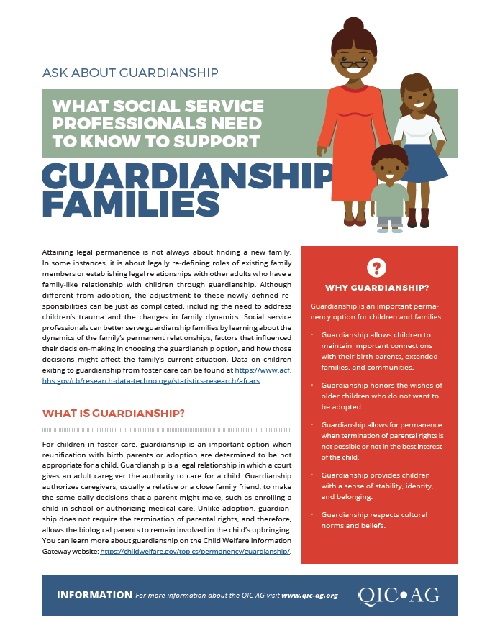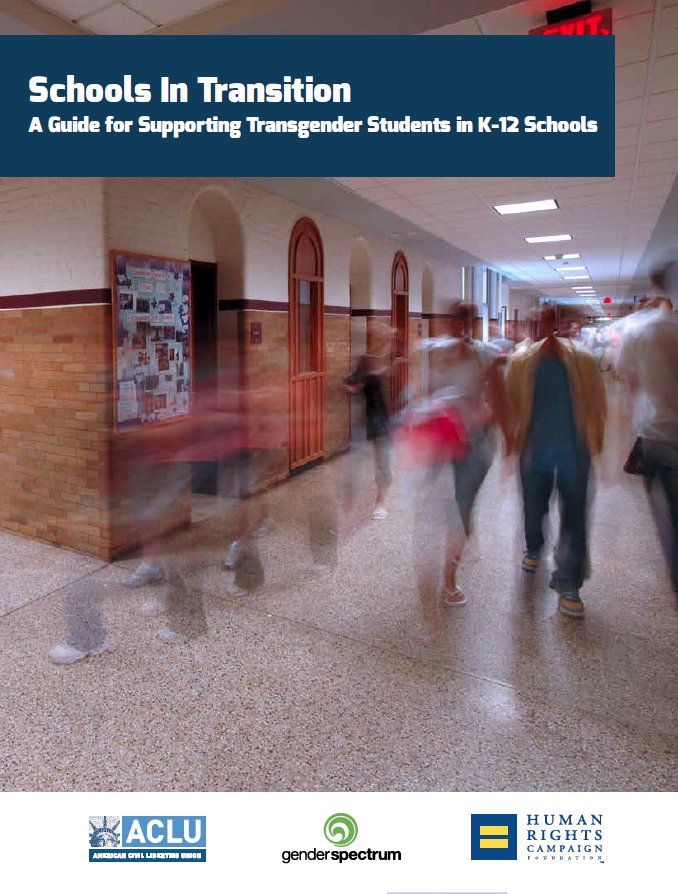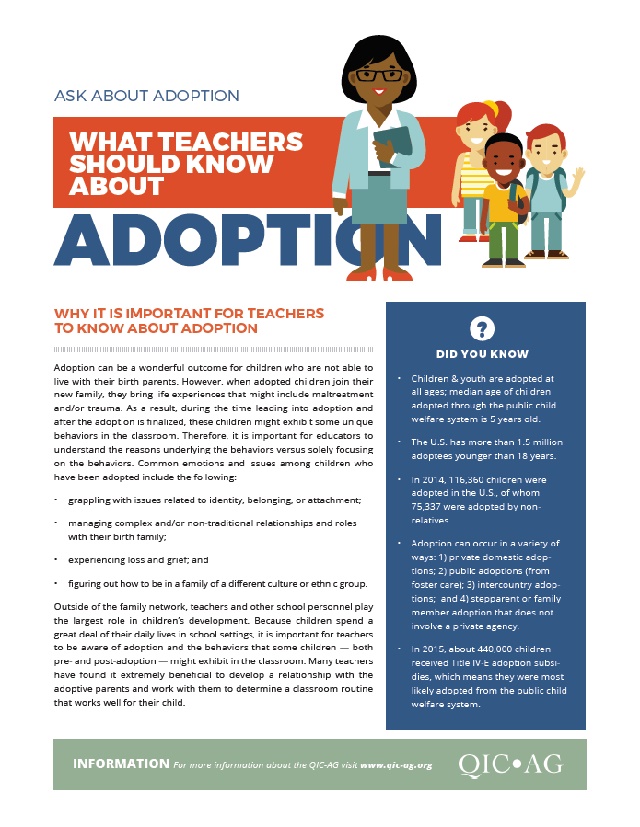
Why is it important for teachers to know about adoption
Adoption can be a wonderful outcome for children who are not able to
live with their birth parents. However, when adopted children join their
new family, they bring life experiences that might include maltreatment
and/or trauma. As a result, during the time leading into adoption and
after the adoption is finalized, these children might exhibit some unique
behaviors in the classroom. Therefore, it is important for educators to
understand the reasons underlying the behaviors versus solely focusing
on the behaviors.

